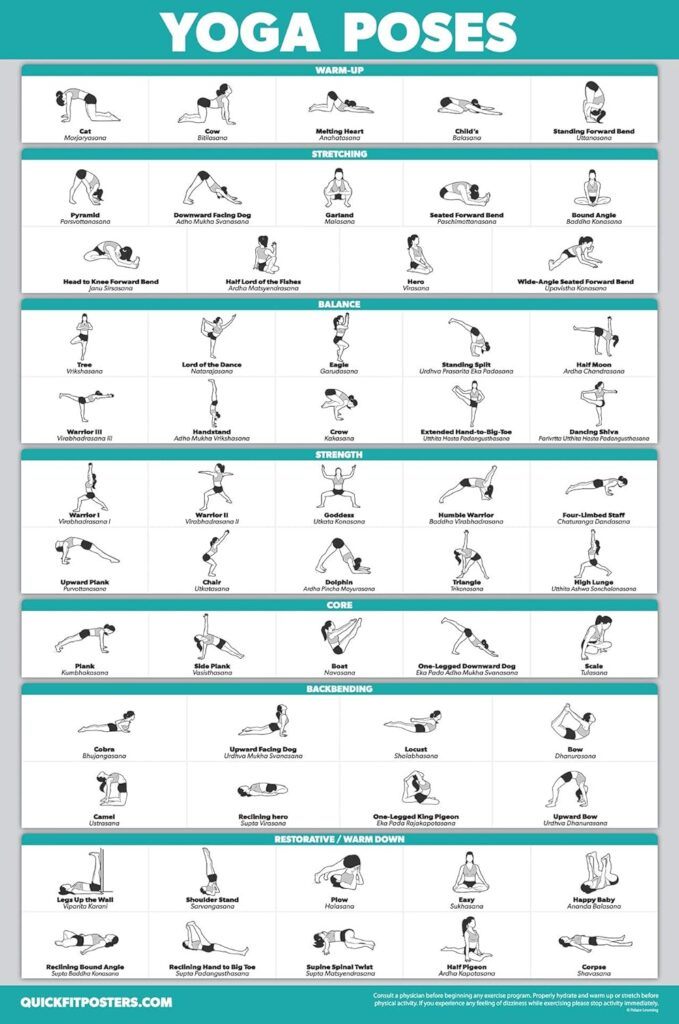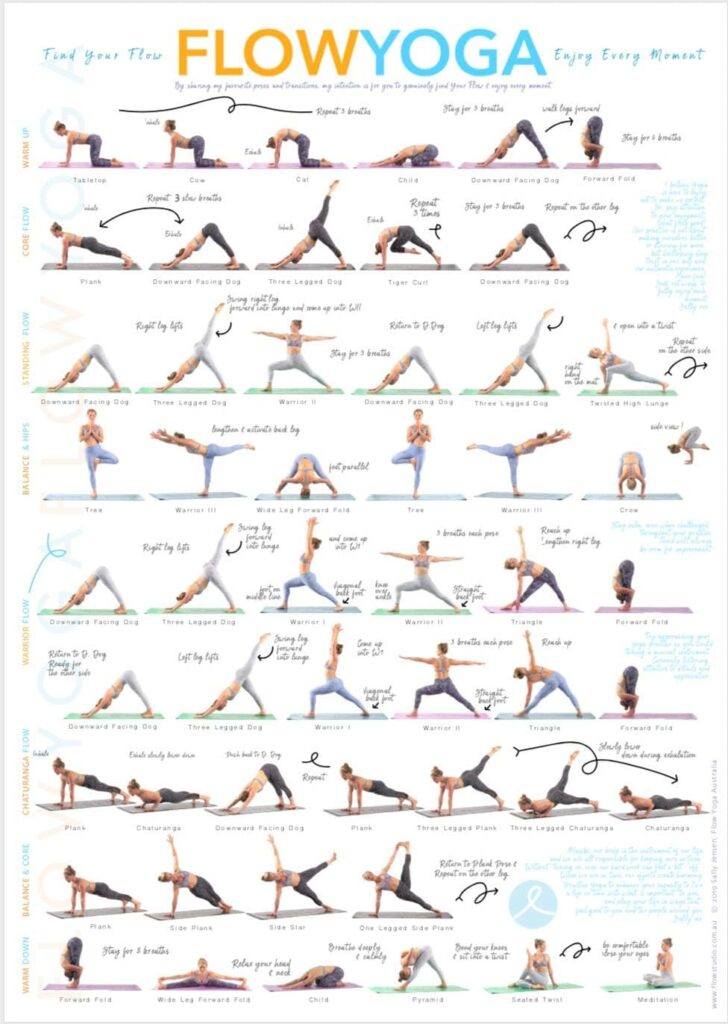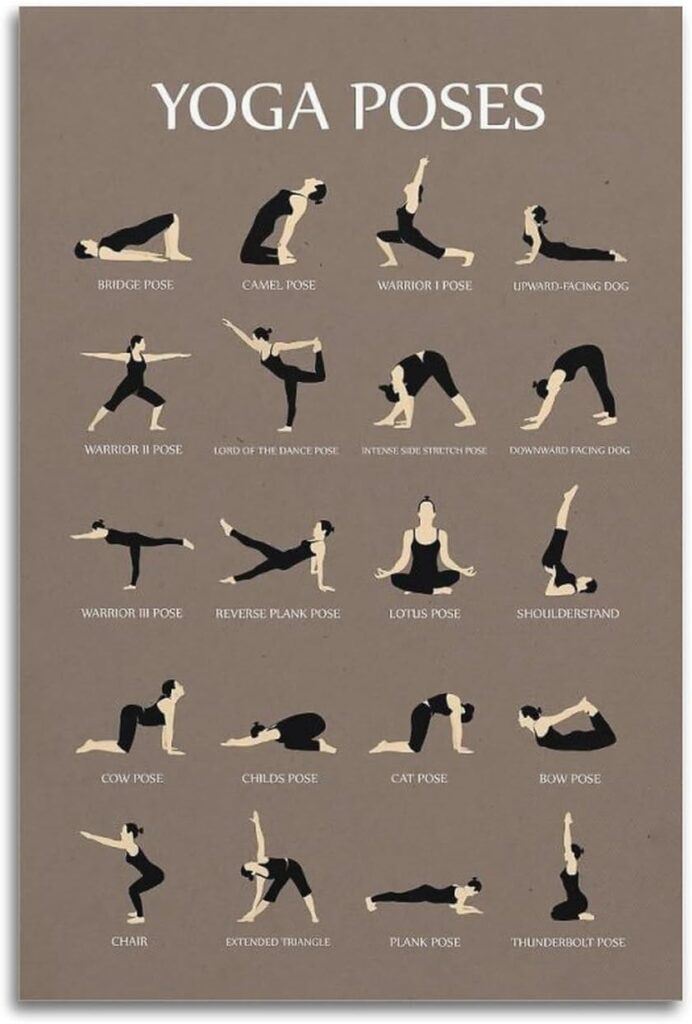I’m going to kick things off by diving into the world of yoga, a practice rich with history and benefits that have stood the test of time. If you’re new to the yoga mat, welcome! You’re going to find out about a handful of essential poses that are perfect for building your foundation.
This isn’t just about stretching and bending; it’s also about creating a solid base for your physical well-being and mental peace. I’m here to help you with clear guidance and practical steps as you embark on this new journey.
Don’t worry too much about nailing every pose right away. Your first attempts at yoga poses are about exploring your body’s unique landscape of movement and breath. Choose something that resonates with you, and remember that you can always adjust your approach down the road.

So, what does this website include? We’ll start with a brief introduction to the benefits of yoga, especially for you as a beginner. Next, I’ll share some key advice to ensure your yoga experience is safe and enjoyable. Then, we’ll move through a handpicked selection of beginner-friendly yoga poses, accompanied by step-by-step guidance.
The aim is to provide you with two downloadable and printable guides that you can refer to and use during your daily practice. I hope that these become a valuable tool for you to cultivate a routine that fosters strength, flexibility, and tranquility.
Remember, every yogi started as a beginner at some point. I hope that you embrace this practice with patience and curiosity, and I’m excited to see where this journey takes you. In the last section, you’ll get detailed instructions for each pose that’s not only going to boost your confidence, but also ensure you form a strong yoga foundation.
What Type Of Yoga Should A Beginner Start With?

Introduction To The Benefits Of Yoga
Yoga is more than just a physical exercise; it’s a holistic approach to wellness that combines body, mind, and spirit. For beginners, yoga offers numerous benefits, including improved flexibility, increased strength, reduced stress, and enhanced mental clarity1. Yoga is accessible to people of all ages and fitness levels, making it an excellent choice for those looking to start a journey toward better health2.
Safety And Enjoyment In Yoga Practice
To ensure a safe and enjoyable yoga experience, beginners should consider the following key advice:
- Start Slow and Listen to Your Body: It’s crucial not to push yourself too hard, especially when you’re new to yoga. Listen to your body and avoid any positions or movements that cause discomfort or pain. If you feel any strain, ease off and focus on breathing3.
- Learn the Basic Yoga Poses for Beginners: Familiarize yourself with foundational yoga poses such as Mountain Pose (Tadasana), Downward Facing Dog (Adho Mukha Svanasana), and Child’s Pose (Balasana)4. These poses serve as building blocks for more advanced postures.
- Use Props for Support: Props like yoga blocks, straps, and bolsters can provide support and stability, helping beginners maintain proper alignment and reducing the risk of injury. Don’t hesitate to use them as needed5.
- Focus on Breathing and Mindfulness: Yoga isn’t just about physical postures; it’s also about connecting with your breath and being present in the moment. Practicing deep, controlled breathing can help you relax and enhance your yoga experience6.
- Seek Professional Guidance: If you’re new to yoga, consider taking classes from a certified yoga instructor. They can guide you through proper techniques, ensure you maintain good form, and offer modifications for poses that might be challenging7.
- Practice Regularly, But Don’t Overdo It: Consistency is key in yoga, but overdoing it can lead to burnout or injury. Aim for a few sessions per week and gradually increase as you become more comfortable.
Discover the Ultimate Yoga Gear: Your Path to Serenity Starts Here!
25 Most Popular Yoga Poses
1. **Mountain Pose (Tadasana)**: Stand tall with feet together, arms at your sides, and shoulders relaxed.
2. **Downward-Facing Dog (Adho Mukha Svanasana)**: Start on your hands and knees, then lift your hips upward, forming an inverted V-shape.
3. **Tree Pose (Vrksasana)**: Stand on one leg, bringing the sole of the other foot to the inner thigh or calf, with hands in prayer position at the heart center.
4. **Warrior I (Virabhadrasana I)**: Step one foot back, bend the front knee, and extend arms overhead, facing forward.
5. **Warrior II (Virabhadrasana II)**: From Warrior I, open hips, and arms to the sides, and gaze over the front fingertips.
6. **Warrior III (Virabhadrasana III)**: Shift weight onto one leg, and extend the other leg behind, while the torso and arms are parallel to the ground.
7. **Child’s Pose (Balasana)**: Kneel, then sit back on your heels while extending your arms forward and resting your forehead on the ground.
8. **Cobra Pose (Bhujangasana)**: Lie on your stomach, hands under your shoulders, and lift your chest while keeping elbows close to the body.
9. **Plank Pose (Phalakasana)**: Start in a push-up position, with arms straight and shoulders over wrists, forming a straight line from head to heels.
10. **Boat Pose (Navasana)**: Sit on the floor, lift your feet off the ground, and balance on sitting bones while extending your arms forward.
11. **Bridge Pose (Setu Bandhasana)**: Lie on your back, bend your knees, and feet hip-width apart, and lift your hips towards the ceiling while keeping your shoulders on the ground.
12. **Seated Forward Bend (Paschimottanasana)**: Sit on the floor, legs extended, fold forward from the hips, reaching for feet or shins.
13. **Triangle Pose (Trikonasana)**: Stand with legs wide apart, extend arms to the sides, lean to one side, reaching toward the ankle or shin.
14. **Cat-Cow Pose (Marjaryasana-Bitilasana)**: Start on hands and knees, arch the back up (Cat), then drop the belly and lift the gaze (Cow).
15. **Fish Pose (Matsyasana)**: Lie on your back, lift the chest by pressing into elbows, arching the back, and opening the heart.
16. **Pigeon Pose (Eka Pada Rajakapotasana)**: From downward dog, bring one knee towards the same-side wrist, extending the other leg behind, sinking hips towards the floor.
17. **Crow Pose (Bakasana)**: Squat down, place hands on the ground, bend elbows, lean forward, and lift feet off the ground, balancing on arms.
18. **Upward-Facing Dog (Urdhva Mukha Svanasana)**: From a prone position, press into hands, straighten arms, and lift the chest off the ground while keeping legs and pelvis on the mat.
19. **Extended Side Angle Pose (Utthita Parsvakonasana)**: From Warrior II, extend the side body over the bent knee, reaching the front arm overhead and placing the other hand on the ground or a block.
20. **Half Moon Pose (Ardha Chandrasana)**: From Warrior II, lean forward, place your hand on the ground or a block, and lift the back leg while extending the top arm upward.
21. **Revolved Triangle Pose (Parivrtta Trikonasana)**: From Triangle Pose, twist the torso, bringing one hand to the ground or a block, and the other hand to the sky.
22. **Standing Forward Bend (Uttanasana)**: Stand with feet hip-width apart, hinge at the hips, and fold forward, reaching for the ground or holding onto opposite elbows.
23. **Camel Pose (Ustrasana)**: Kneel, tuck toes, lift hips, and reach back to grasp heels while arching the back and lifting the chest.
24. **Extended Triangle Pose (Utthita Trikonasana)**: From the standing position, step legs wide apart, reach arms out to the sides, lean to one side, and reach the opposite hand towards the ankle or shin.
25. **Corpse Pose (Savasana)**: Lie on your back, arms and legs extended, palms facing up, close your eyes, and relax completely.
Definition Of Mindfulness
In the context of yoga, mindfulness refers to a state of being fully aware and present in the moment, without judgment10. It involves paying attention to your thoughts, emotions, and bodily sensations during yoga practice, allowing you to connect more deeply with yourself and improve your overall experience.
Conclusion
Yoga is a journey that unfolds over time, offering both physical and mental benefits. By starting slowly, listening to your body, and focusing on the fundamentals, beginners can enjoy a safe and fulfilling yoga experience. With the proper guidance and a mindful approach, yoga can become a valuable part of your daily routine, contributing to overall health and well-being9.
References
- [Yoga Journal. (2022). “Benefits of Yoga.” Retrieved from https://www.yogajournal.com/]
- [Harvard Health Publishing. (2021). “Yoga — Benefits Beyond the Mat.” Retrieved from https://www.health.harvard.edu/]
- [Mayo Clinic. (2020). “Yoga: A Beginner’s Guide.” Retrieved from https://www.mayoclinic.org/]
- [Yoga Basics. (2022). “Yoga Poses for Beginners.” Retrieved from https://www.yogabasics.com/]
- [Yoga International. (2021). “The Use of Props in Yoga.” Retrieved from https://yogainternational.com/]
- [Mindful. (2021). “The Role of Breathing in Yoga.” Retrieved from https://www.mindful.org/]
- [Yoga Alliance. (2021). “Find a Certified Yoga Instructor.” Retrieved from https://www.yogaalliance.org/]
- [Yoga International. (2022). “Yoga and Injury Prevention.” Retrieved from https://yogainternational.com/]
- [National Center for Complementary and Integrative Health. (2020). “Yoga: What You Need to Know.” Retrieved from https://www.nccih.nih.gov/]
- [Greater Good Science Center. (2021). “What is Mindfulness?” Retrieved from https://greatergood.berkeley.edu/]
Basic Yoga Poses Beginners Printable PDF Free


